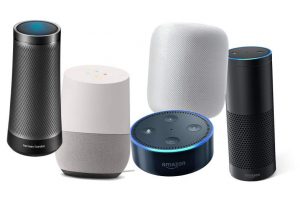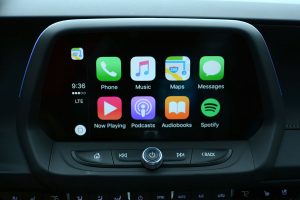The transition over the last decade from purchases of CDs, vinyl albums and downloads to subscription and advertising supported streaming has had an enormous economic impact on the music industry.
Download report here.
The transition over the last decade from purchases of CDs, vinyl albums and downloads to subscription and advertising supported streaming has had an enormous economic impact on the music industry.
Download report here.
 For millions of us, artificial Intelligence got real when we added smart speakers to our homes. Our AI assistants are standing by, ready to play music, turn on the news, start the oven, or see who’s at the front door. But as they make life easier, they’re also creating new challenges for the music and entertainment industries. And then there’s the matter of security…just how smart do we want our AI devices to be?
For millions of us, artificial Intelligence got real when we added smart speakers to our homes. Our AI assistants are standing by, ready to play music, turn on the news, start the oven, or see who’s at the front door. But as they make life easier, they’re also creating new challenges for the music and entertainment industries. And then there’s the matter of security…just how smart do we want our AI devices to be?
Amazon, Google, and Apple are all now competing to be the smart speaker in our homes — and cars. As their underlying voice assistants become more integrated in our homes, the entertainment industry must rethink how to reach these consumers. How will Alexa, Google Home or Siri travel beyond our households and into the connected car? In this episode of Musonomics, we’ll hear from industry reporter Cherie Hue and Larry Rosin of Edison Research.
 Digital music services continue to drive recovery of the music industry after a long period of decline, and the AM/FM music radio business is starting to feel it. Young people born after Millennials don’t use radio the same as previous generations. Can commercial AM/FM radio compete with pure play digital music services? Russ Crupnick of MusicWatch and Steve Goldstein of Amplifi Media join us to discuss what’s happening to radio listenership, and how radio needs to respond to the threat posed by unlimited, commercial-free music.
Digital music services continue to drive recovery of the music industry after a long period of decline, and the AM/FM music radio business is starting to feel it. Young people born after Millennials don’t use radio the same as previous generations. Can commercial AM/FM radio compete with pure play digital music services? Russ Crupnick of MusicWatch and Steve Goldstein of Amplifi Media join us to discuss what’s happening to radio listenership, and how radio needs to respond to the threat posed by unlimited, commercial-free music.
The way radio pays for music it uses may have acted as a kind of an economic disincentive for radio to invest in its own digital future. AM/FM radio broadcasters in the US pay a tiny amount, about 4% of revenues, to songwriters and music publishers, but American AM/FM stations are exempted from paying anything to the artists who performed the music or their record companies. This exemption doesn’t apply to digitally delivered radio streams, like SiriusXM or Pandora, or even the digital streams of AM/FM radio broadcasters.
Edison Research’s “Share of Ear” report shows that AM/FM radio is responsible for over half of all time spent listening to music in the U.S. among listeners 18 and older. Radio believes the power of its strong, local brands will insulate it from digital competition. However, this may not be the case in the car as the dashboard reconfigures around connectivity with advanced digital services. The car is currently the number one location for listening to radio, and automotive is the number one revenue category for radio. The connected car and its multiple audio offerings may be the greatest threat to AM/FM radio broadcasting, with 75% of new cars expected to be connected by 2020. Listen to this episode of Musonomics as we dive into the uncertain future of radio.